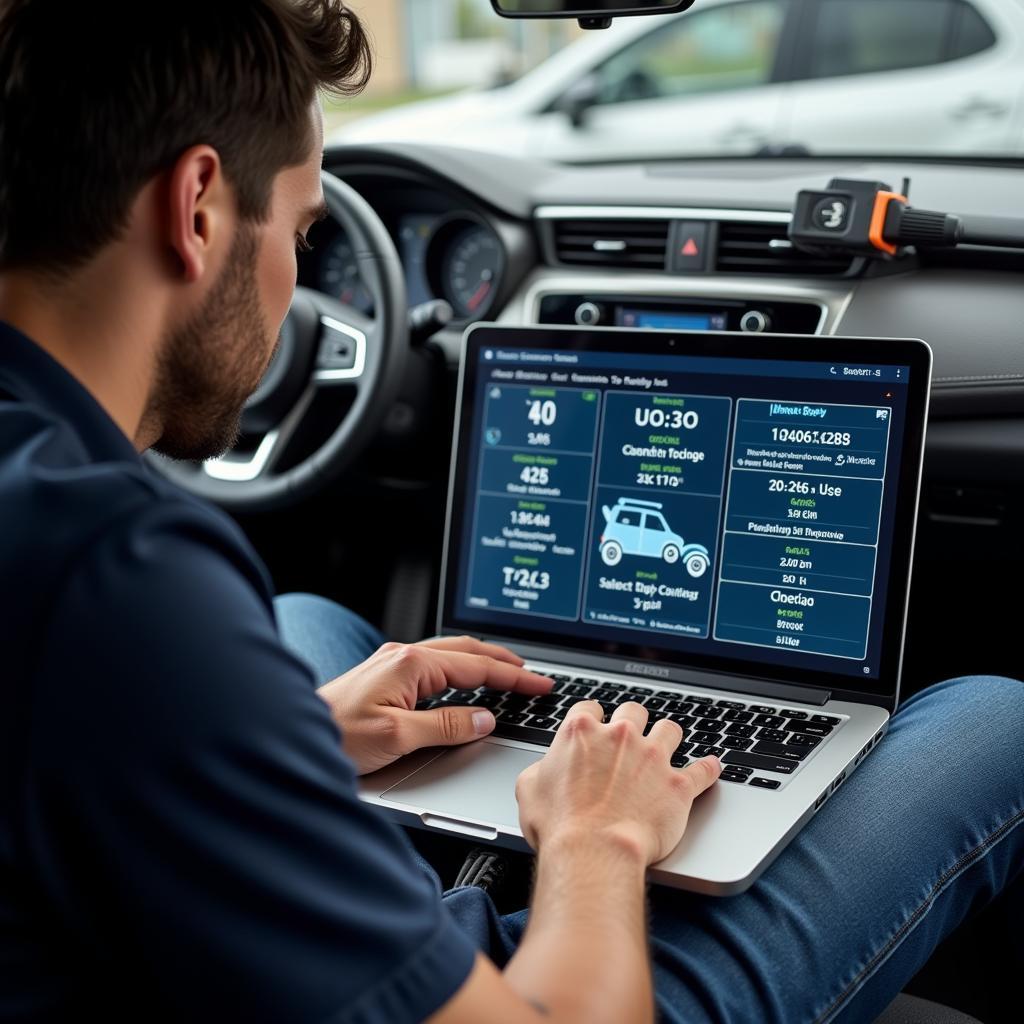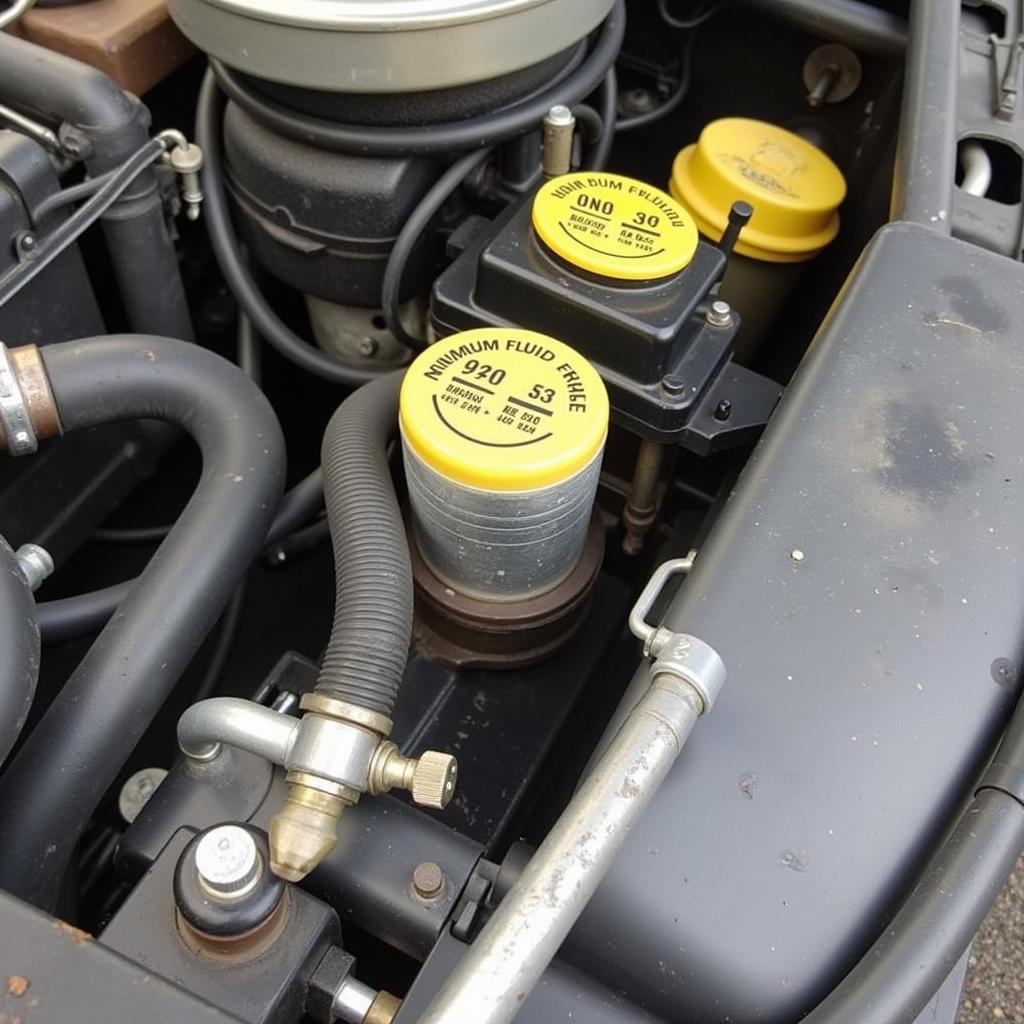Changing your car battery should be a simple task, yet sometimes you might find your car not starting after battery change. This frustrating situation can leave you stranded and wondering what went wrong. This comprehensive guide will walk you through the common causes and provide step-by-step solutions to get you back on the road.
Common Reasons Why Your Car Won’t Start After a Battery Replacement
Several factors can contribute to a car not starting even after a new battery is installed. Understanding these issues is the first step to fixing the problem. These can range from simple loose connections to more complex electrical faults.
- Loose or corroded battery terminals: This is the most common culprit. Even a slightly loose connection can prevent the battery from delivering enough power to start the engine. Corrosion can also disrupt the flow of electricity.
- Faulty battery cables: Damaged or worn-out battery cables can also prevent the current from reaching the starter. Look for cracks, fraying, or corrosion on the cables.
- Bad starter: Even with a new battery, a failing starter motor won’t crank the engine. You might hear a clicking sound when you turn the key, indicating a starter problem.
- Blown fuses: A blown fuse in the starting circuit can interrupt the power supply to the starter. Check the fuse box for any blown fuses related to the starting system.
- Security system issues: Sometimes, the car’s anti-theft system can be triggered during a battery change, preventing the engine from starting. This can often be resolved by following the specific reset procedure outlined in your car’s owner manual.
- Parasitic drain: A parasitic drain occurs when an electrical component continues to draw power even when the car is off, eventually draining the new battery. This could be due to a faulty alternator, interior lights left on, or a malfunctioning electronic device.
Troubleshooting Steps When Your Car Won’t Start After Battery Change
If you’re faced with a car that refuses to start after a battery replacement, don’t panic. Follow these steps to diagnose and resolve the issue:
- Check the battery terminals: Ensure the positive and negative terminals are securely connected to the battery posts. Tighten them with a wrench if necessary. Clean any corrosion with a wire brush and baking soda solution.
- Inspect the battery cables: Examine the battery cables for any signs of damage, such as cracks, fraying, or corrosion. If any damage is present, replace the cables.
- Test the battery voltage: Use a multimeter to check the battery voltage. It should read around 12.6 volts. If the voltage is significantly lower, the battery might be faulty even if it’s new. If your car battery dies every year, it could be a sign of a larger issue.
- Check the fuses: Locate the fuse box and check the fuses related to the starting system. Replace any blown fuses with the correct amperage rating.
- Try jump-starting the car: If the car jump-starts, it could indicate a weak battery or a charging system problem. You might need a new battery even if you just replaced it.
- Reset the security system: Refer to your owner’s manual for the specific procedure to reset your car’s anti-theft system. This might involve using the key fob or a specific sequence of actions.
- Inspect the starter: If you hear a clicking sound when turning the key, the starter might be faulty. You can try tapping on the starter motor with a hammer while someone tries to start the car. If this works temporarily, the starter needs to be replaced.
“A common mistake is not fully tightening the battery terminals,” says John Davis, an automotive electrical engineer with 20 years of experience. “This simple oversight can lead to all sorts of starting problems.”
Remote Diagnostics and Software Solutions
In some cases, remote diagnostics and software programming can be used to identify and fix the issue if your car not starting after battery change. Modern vehicles rely heavily on software, and a glitch or incorrect configuration can sometimes prevent the car from starting, especially after a battery disconnect. A qualified technician can access the car’s computer remotely and check for any software-related problems.
If you suspect your key fob battery is dead, you may need to replace it. This can be done easily at home, and instructions can be found online. You can also find resources about what happens when your key fob battery is dead to better understand its impact on your vehicle’s operation. If you’re looking for information about a battery for Honda CRV key fob 2015, specific guides are also available. Similarly, replacing the MB key fob battery is a straightforward process with readily available online tutorials.
 Remote Car Diagnostics with Laptop
Remote Car Diagnostics with Laptop
“With advancements in technology, remote diagnostics and programming are becoming increasingly valuable tools for resolving car starting issues,” adds Maria Sanchez, a software engineer specializing in automotive systems. “This allows for quicker and more efficient troubleshooting.”
Conclusion
Experiencing a car not starting after battery change can be incredibly frustrating, but with a systematic approach, you can often pinpoint and resolve the problem yourself. By following the troubleshooting steps outlined in this guide and understanding the potential causes, you can get your car back on the road quickly. If the issue persists, seeking professional help from a qualified automotive technician is always recommended. Remember, even a seemingly simple task like changing a battery can sometimes lead to unexpected complications. Don’t hesitate to reach out for assistance if needed.

